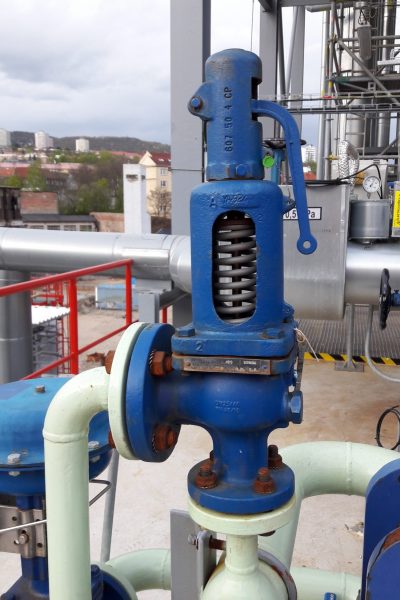Relief Valves

Product Description
Relief valves are found in many pressurized systems that involve the control of fluid flow, such as ones that are controlled electronically, hydraulically, While typical systems such as these require some source of power to operate them, relief valves must by their nature be capable of operating under all conditions, especially in the case of failure of primary power when the system controls may not be operable. For this reason, relief valves are primarily not separately powered devices and use the passive power of the process fluid pressure to actuate the valve.
Types of Relief Valves
Conventional spring loaded
Balanced spring loaded
Pilot operated.
Typical Applications
Aircraft & aerospace
oil & gas
petrochemical
power generation
chemical manufacturing
refrigeration
Weldability
Good
Related material specifications
Valve Size: Valve size is the designated size of the valve by manufacturer. This typically represents the size of the passage opening
Search Logic: User may specify either, both, or neither of the “At Least” and “No More Than” values. Products returned as matches will meet all specified criteria.
Pressure Rating: Maximum safe pressure value for which the valve is rated.
Search Logic: User may specify either, both, or neither of the “At Least” and “No More Than” values. Products returned as matches will meet all specified criteria.
Controlled Pressure Range: Limits of adjustment control.
Search Logic: User may specify either, both, or neither of the “At Least” and “No More Than” values. Products returned as matches will meet all specified criteria.
Connection
Threaded: The valve has internal or external threads for inlet or outlet connection(s).
Compression Fitting: A sealed pipe connection without soldering or threading. As the nut on one fitting is tightened, it compresses a washer around the second pipe, forming a watertight closure.
Bolt Flange: The valve has a bolt flange(s) for inlet or outlet connection.
Clamp Flange: The valve has a clamp flange(s) for inlet or outlet connection.
Union: The valve has a union connection for inlet or outlet connection(s).
Tube Fitting: The valve has a connection for directly joining tubing at the inlet and/or outlet connections.
Butt Weld: The valve has a butt weld sized connection for inlet or outlet connection.
Socket Weld / Solder: The valve has a socket weld connection for inlet or outlet connection.
Metal Face Seal: The valve has a metal gasket sandwiched between two fitting parts. The gasket forms a face seal on each side of the fitting.
Availability
Stainless Steel Pressure Relief Valves: ASTM / ASME 201, 202, 301, 304, 304L, 310, 310S, 316L, 316TI, 317, 317L, 321, 347, 409, 409M, 409L, 410, 410S, 420, 430, 431, 441, 444, 446, 17.4PH, 904L
Duplex Pressure Relief Valves: ASTM / ASME SA 790 UNS NO S 31803 , S 32205 , S 32550 , S 32750
Alloy Steel Pressure Relief Valves: ASTM / ASME A 691 GRP1 CR , 1 1/4 CR , 2 1/4 CR , 5 CR , 9CR ,
Super Duplex Pressure Relief Valves: S32750
Inconel Pressure Relief Valves: Inconel 600, Inconel 625, Inconel 686, Inconel 718, Inconel 800, Incoloy Pressure Relief Valves: Incoloy 800, 800H, 800HT, Incoloy 825, Incoloy 925
Monel Pressure Relief Valves: Monel 400, Monel k500
Hastelloy Pressure Relief Valves: Hastelloy C-22, Hastelloy C-276, Hastelloy C-2000, Hastelloy C-4,
Nickel Alloy Pressure Relief Valves: Nickel Alloys 200, Nickel Alloys 201
Key features
-
They vent the fluid to safeguard the system from overpressure.
-
They reclose and prevent loss of fluid when system pressure returns back to acceptable.
-
Installation of the PRV system minimizes damage to system components.
-
They are reliable and versatile
Corrosion Resistance
Very Good
Machinability
Good / fair.
Chemical Composition (weight %)
| Grade | C | Mn | Si | S | Cu | Fe | Ni |
| 200 | 0.15 max | 0.35 max | 0.35 max | 0.01 max | 0.25 max | 0.40 max | 99.0 min |
